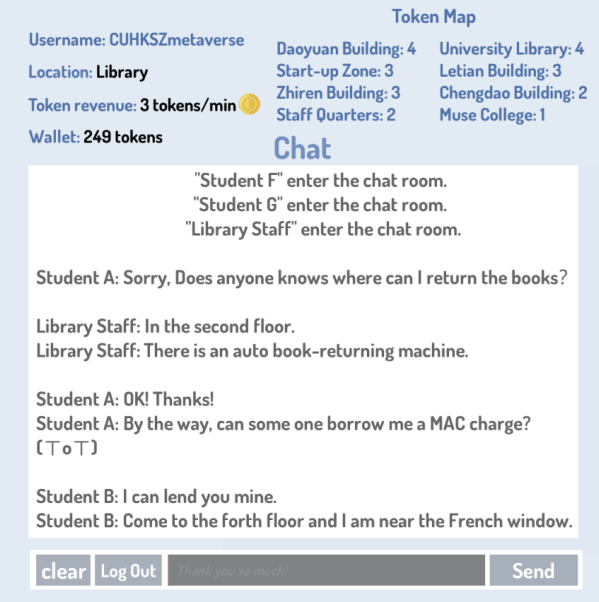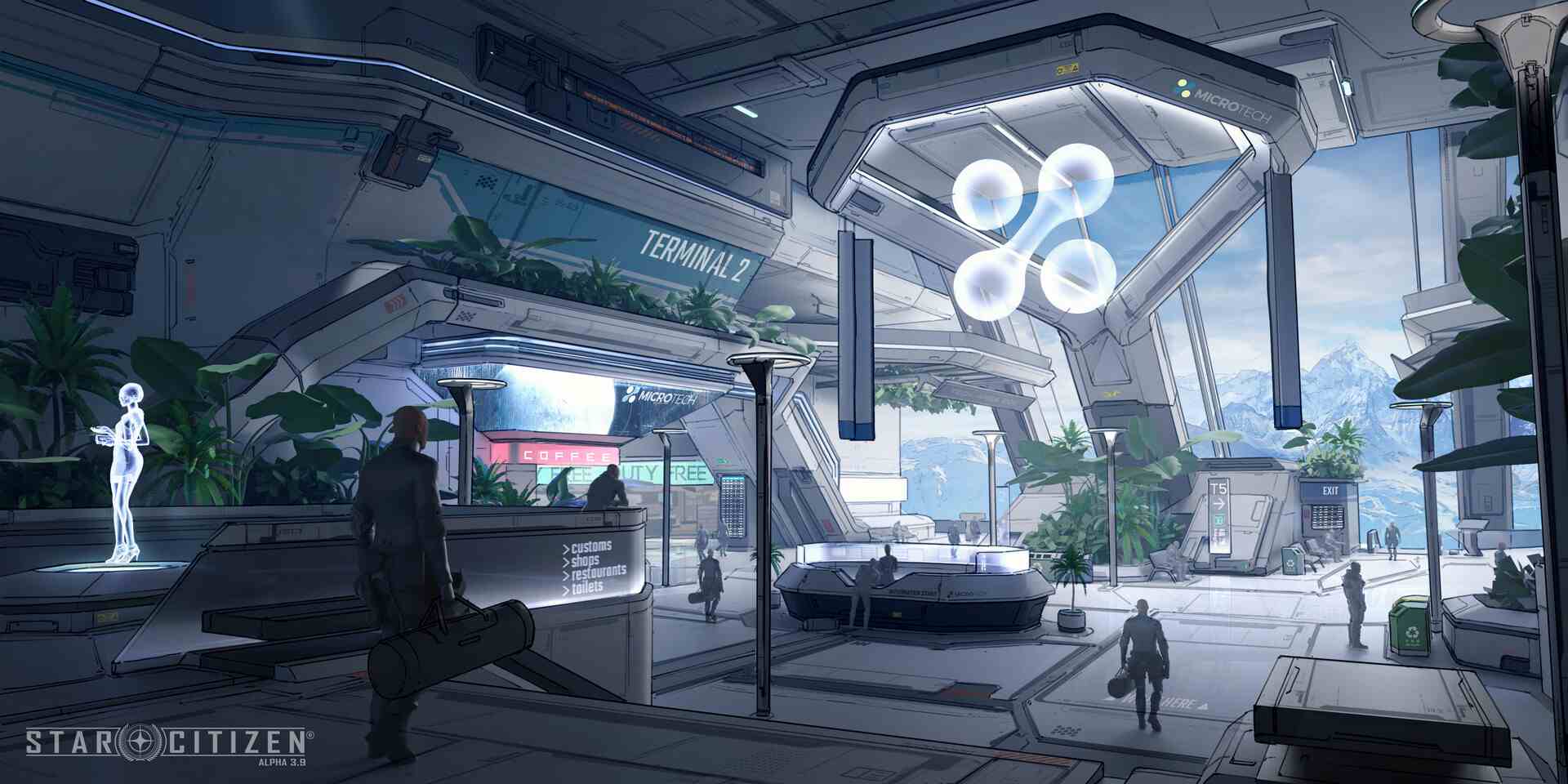Metaverse universities and campuses built as virtual worlds can enrich the experience of on-campus students in a variety of ways. Let’s dive into four examples.
Virtual campuses make planning & attending student events easier
Imagine you’re a student in charge of planning a large, in-person event for your student organization. You first need to reserve a large, physical location for people to gather. Other students might also be trying to reserve that same space at the same time you need it. You also need to get approval for a budget that can buy all the supplies. Larger events also require lots of physical labor to set up and clean up. Then, imagine on the day of the event, after tons of hard work, there’s a severe thunderstorm and only a few people attend your event because most people didn’t want to walk through the storm to your event. It happens.

View from the Axon Park Medical Complex
In contrast, virtual campuses make it easier for students to host, advertise, and attend university events. Space can be nearly unlimited in virtual campuses. No budget is required because all the supplies can be created virtually through student generated content. For example, UC Berkeley students generated their own content by recreating their football stadium in Minecraft (a modern prototype of the metaverse). Then, they hosted their 2020 graduation ceremony at the virtual football stadium when the pandemic made gathering in person impossible. Overall, virtual campuses provide greater accessibility because many of the barriers of attending physical events—such as travel costs and health risks—are removed.
Virtual campuses can incentivize participation in real world activities
Virtual events won’t completely replace in-person events. In fact, virtual events can even encourage higher student participation in physical events. For example, the Chinese University of Hong Kong, Shen-zhen (CUHKSZ) recently recreated their campus in a virtual world that on-campus students can access via their smartphones.
Students who participate in the virtual campus passively earn tokens every minute, and these tokens can be used to buy other student generated content, such as virtual clothes or furniture.
The University incentivizes students to study in the library by boosting the amount of tokens they earn per minute when they are physically in the library and also in the virtual world. The physical library is a quiet place, but students can chat via text in the virtual library, fostering new connections.

Screenshot from CUHKSZ’s virtual campus. Students earn 3 tokens per minute in the library vs. 1 token per minute elsewhere. Students can even chat with other students who are at the library at the same time.
This example shows how students can learn, earn, and have fun in virtual campuses while still actively engaging with each other in the physical world. Metaverse campuses can also be accessed through augmented reality, virtual reality, and even mixed reality to make the experience more immersive and engaging.
Metaverse Universities Helps Diversity Thrive
Universities serve diverse groups of students. But in the physical world, there’s often not enough resources to satisfy everyone’s needs. For example, my university spent hundreds of millions of dollars building fancy, high-tech science buildings that are centrally located. But they also built a small, under-funded visual arts building on the far edge of the campus. Science majors thrived & enjoyed their building resources, while visual arts majors were hindered by their underfunded building.
In metaverse universities, there can be unlimited space, built and customized by the students as needed so that all groups of students can thrive. For example, visual art majors can create massive, virtual museums to feature student art (the artists can even choose to sell their art for other students to hang in their virtual dorms). Similarly, Chemistry majors can create exhibits that feature their science projects in engaging ways. Essentially all student clubs can create their own, unique space in virtual campuses using the metaverse university’s content creation system.

Star Citizen, an example of how virtual campuses may look in the future.
Virtual campuses can improve equal opportunity and self-expression
In the physical world, race, gender, physical ability, and socioeconomic status gives students certain privileges and disadvantages. But in virtual campuses, there can be greater equality and self-expression because people can be fully customizable avatars. Students can choose to customize their avatar in a way that truly represents them. They can even give their avatars nicknames or pseudonymous names. Some students might even choose animal avatars over human avatars. In modern metaverse prototypes, it matters less “what” you are, and matters more “who” you are as a person. This encourages all types of people to interact with each other, creating more friendships and opportunities.
On the other hand, some groups of students might choose to use neutral avatars with limited customization options in an effort to remove any implicit biases among each other. Ultimately, the school and student community can work together to decide how they want to create a safe and fun environment for everyone.
Virtual campuses can also have fully autonomous ecosystems, where all students can use their voices to create a more fair campus through democracy & DAOs (decentralized autonomous organizations, a new form of governance). For example, students could earn tokens through participation in the virtual or real campus, and then stake those tokens to vote on campus life proposals. Students can also elect other students to serve on a virtual student union that represents them.
Conclusion
Early metaverse universities prove that virtual campuses can provide students with greater accessibility, higher in-person event attendance, more resources for all groups of people to thrive, and more power to self-govern and self-express.
Source: Metaverse for Social Good: A University Campus Prototype
Feature Image Credit Simon Lee



